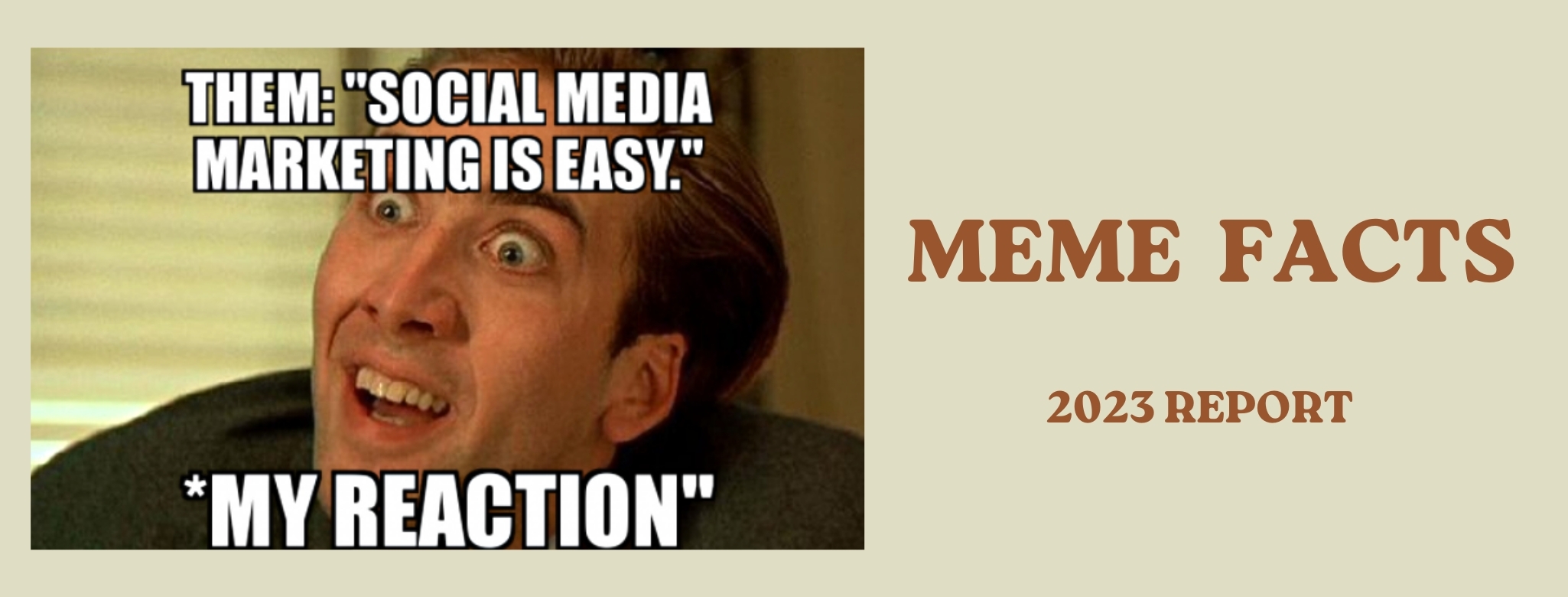
09 Jun TOP MEME FACTS IN 2023
There is no doubt that memes have taken over the internet in recent years. The word “meme” was first coined by Richard Dawkins in his 1976 book The Selfish Gene. Dawkins observed that specific ideas and behavior patterns seemed to spread through a population similar way to genes. He called these units of cultural transmission “memes” and predicted that they would become increasingly important as the world became more connected. Some historians even believe that even cavemen had their prehistoric memes. While the exact origins of memes are still debated, there is no denying their impact on modern culture. Today, memes communicate ideas and humorously comment on current events. They have also been known to spark social movements and shape public opinion.
Below, we highlight 15 key meme facts:
Meme Facts (Editors Choice)
- The word “meme” was first coined by Richard Dawkins in his 1976 book The Selfish Gene
- Some historians believe that even cavemen had their own prehistoric memes
- Dancing Baby or Baby Cha-Cha is one of the oldest viral video memes all the way from 1996
- “It’s a Trap!” is one of the earliest reaction image memes from the early 2000s
- The most valuable NFT meme is “Disaster Girl,” worth $573,000 at the auction
- The lifespan of the modern meme is four months
Facts Meme: 15 Top Meme Facts in 2023!
Meme Facts #1: The word “meme” was first coined by Richard Dawkins in his 1976 book The Selfish Gene.
There’s no doubt that memes have taken over the internet recently. From funny cat pictures to inside jokes that only make sense to a particular community, memes have become a staple of online culture. But where did the word “meme” come from? Richard Dawkins first coined it in his 1976 book The Selfish Gene. Dawkins observed that specific ideas and behavior patterns seemed to spread through a population in a similar way to genes. He called these units of cultural transmission “memes” and predicted that they would become increasingly important as the world became more connected. Today, Dawkins’s predictions seem to have come true, as memes have become an inescapable part of life online.
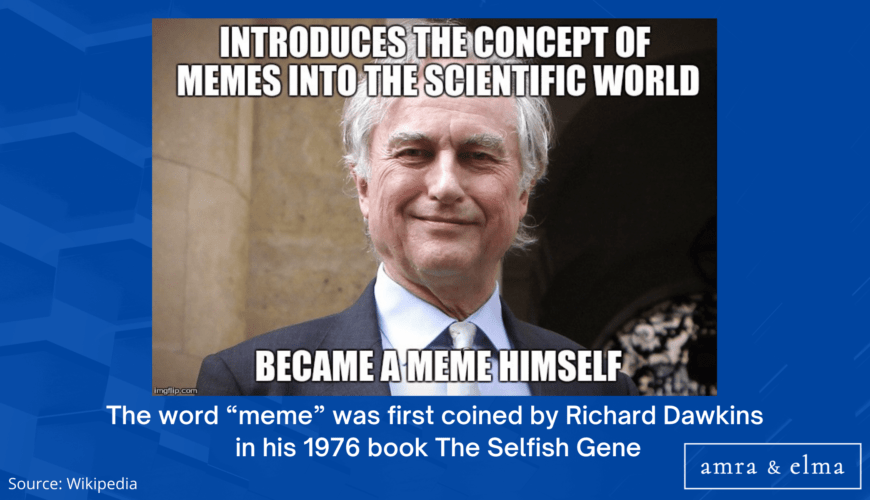
Meme Facts #2: The first-ever recorded meme was a comic illustration in 1921.
According to the BBC, the first-ever ever recorded meme was a comic illustration in 1921. The comic was found in a 1921 edition of satirical magazine The Judge, published by the University of Iowa. But we’ve seen a version of the joke using the same format printed at least a year earlier in 1919 or 1920. Both draw from the same template of the ‘Expectations vs. Reality‘ joke, which contrasts two pictures with an obvious discrepancy between them. The earliest known example comes from US Turn-Verein, a German-American gymnastics club based in Cincinnati. In their December 1920 issue of Der Turner, they ran a cartoon that looked incredibly similar to the 1921 Judge comic. It’s impossible to say who created the meme first, but it’s clear that this format was being used for jokes well before the term ‘meme’ was even coined.
Godwin’s Law is one of the oldest and most well-known internet memes still relevant today. It is an internet adage, coined by Mike Godwin in 1990 on the Usenet newsgroup discussion board, that says, “As an online discussion grows longer, the probability of a comparison involving Hitler approaches 1.” As a conversation on the internet goes on, the likelihood of someone mentioning Adolf Hitler or Nazis increases. Today, people use Godwin’s Law to mark the end of a conversation once Hitler or Nazis have been mentioned, noting that the person referred has lost all credibility and, therefore, the argument. While it is often used to shut down conversations, Godwin’s Law can also be used to point out the fallacy of using false equivalencies when discussing complex issues. For example, comparing someone who cuts in line at the grocery store to Hitler would exemplify Godwin’s Law in action. By understanding and applying Godwin’s Law, people can keep conversations civil and productive.
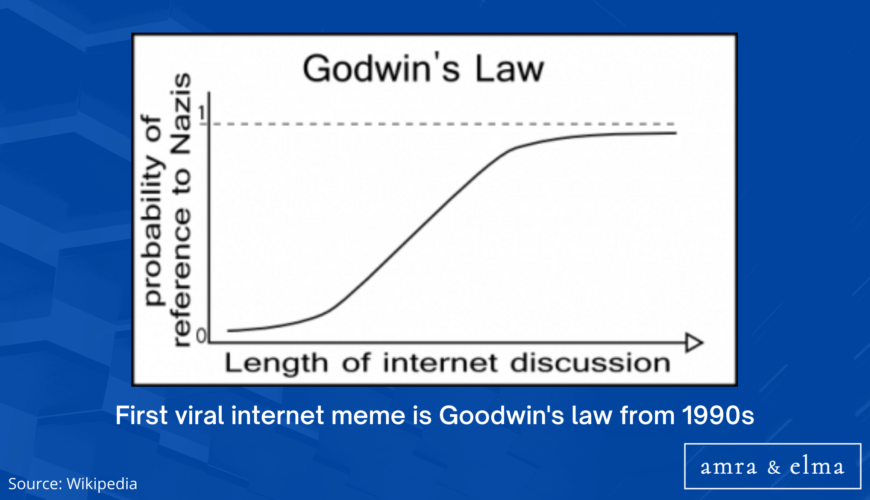
The Dancing Baby or Baby Cha-Cha is one of the oldest viral internet sensations. It gained popularity in 1996 through email chains. The short viral video features a 3D rendered baby dancing to the intro of “Hooked on a Feeling” by the Swedish rock group Blue Swede. It was released as a product sample source file in “Character Studio,” a 3D character animation software product. The animated GIF, which eventually spread around the internet, was created by web developer John Woodell, who demonstrated the movie-to-gif process. The Dancing Baby has been featured in popular culture numerous times, including in an episode of the TV show “Ally McBeal.” More recently, it has been used in a commercial for the iPhone X. The notoriety of the Dancing Baby shows no signs of fading anytime soon.
Meme Facts #5: Hampster Dance, purposely misspelled, is one of the earliest single-purpose meme websites.
Hampster Dance is one of the earliest single-purpose websites. The site was created by Canadian art student Deidre LaCarte in 1998 and featured rows of animated GIFs of hamsters and other small rodents dancing to a sped-up sample of Roger Miller’s “Whistle Stop.” LaCarte created the webpage because she competed with her sister and best friend to see which one of them could generate the most web traffic. The site’s full name was Hampton’s Hamster House in honor of her pet hamster, Hampton Hamster. As of 2019, the Hampster Dance website is no longer active, but the Wayback Machine has been preserved in the Wayback Machine. The legacy of Hampster Dance continues through several spin-off sites and merchandise, including a line of plush toys.
Meme Facts #6: “It’s a Trap!” is one of the earliest reaction image memes from the early 2000s.
It’s a Trap! is one of the earliest reaction image memes and is often used to warn people of a potential bait-and-switch. The meme features an image of and a quote from Admiral Ackbar, a character from the film Star Wars Episode VI: The Return of the Jedi. Although the movie is from 1983, the meme was not popularized until sometime in the early 2000s. A Something Awful administrator created the original macro image, and the meme initially was used as a reaction to photos of people who look sexually ambiguous. The phrase “It’s a trap!” has been repurposed as a general warning against any potential danger or pitfalls in recent years. For example, someone might use the meme to caution others about clicking on a link that might lead to malware. Whether you’re trying to avoid an actual trap or navigate the perils of the internet, it’s always helpful to have Admiral Ackbar on your side.
Meme Facts #7: The ROFLcopter meme is one of the earliest and most notable examples of using ASCII art to create memes.
The ROFLcopter meme is one of the earliest and most notable examples of using ASCII art. It first gained attention on forums such as Fark and was initially used to poke fun at new users who overused “l33t” (elite) acronyms such as ROFL (roll on the floor laughing). The usage of ROFLcopter became popular after it was featured on the Something Awful forums. In 2004, a website, roflcopter.com, was registered and only featured a GIF of an ASCII helicopter with the abbreviations “ROFL” and “LOL” as blades. Though the precise origins of the meme are unknown, it is clear that it quickly gained popularity due to its clever play on words and its simple yet eye-catching design. Today, the ROFLcopter continues to be a popular meme, appearing in various contexts and often being used to express amusement or excitement.
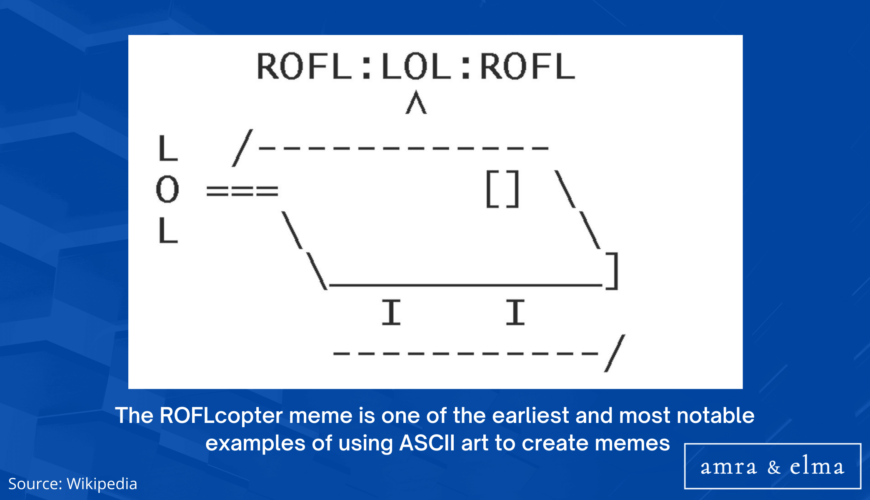
Meme Facts #8: Some historians believe that even cavemen had their own prehistoric memes.
While the internet has made memes more accessible and widespread, they have a long and rich history predating the digital age. Some historians believe that even cavemen had their prehistoric memes, as suggested by the repetitive depictions of male genitalia on cave walls dating back to 10,000 BC. Another prime example is “Kilroy Was Here,” the pre-internet WWII meme that took Europe by storm in the 1940s. The words appeared on buildings and walls across the continent, most often accompanied by a crude drawing of a bald cartoon man with a large, phallic nose. In recent years, memes have evolved from simple sketches and catchphrases into complex works of art that can be used to communicate ideas and feelings in various ways. As they continue to grow, it’s fascinating to think about where they might go next.
Meme Facts #9: Companies have created entire divisions dedicated to creating and managing memes for marketing purposes.
In recent years, memes have become an increasingly popular way to communicate online. What started as a way to share amusing images and jokes among friends has evolved into a powerful tool for marketing and advertising. Companies have even created divisions dedicated to creating and managing memes for marketing purposes. While some argue that this is a cheap and juvenile way to reach consumers, there is no denying the effectiveness of memes as a marketing tool. Memes are often shared widely on social media, which gives companies a unique opportunity to reach a large audience with minimal effort. In addition, memes are often highly shareable and memorable, which can help create a positive association with a company or product. With the right approach, memes can be an extremely effective way to reach and engage potential customers.
Meme Facts#10: Experts believe that memes could be used to help teach people new information or ideas.
In recent years, memes have become an increasingly popular way to communicate online. Memes can be found on nearly every internet corner, from funny cat photos to clever political commentary. However, some experts believe that memes could also be used to help teach people new information or ideas. After all, memes are designed to be attention-grabbing and easy to understand. By using memes as a teaching tool, educators could potentially reach a broad audience with important messages. In addition, memes could also spark interest in a particular topic or subject. For example, a meme about the dangers of texting while driving might encourage more people to pay attention to the road. As the world continues to change, memes will likely play an even more significant role in the way we communicate and learn.
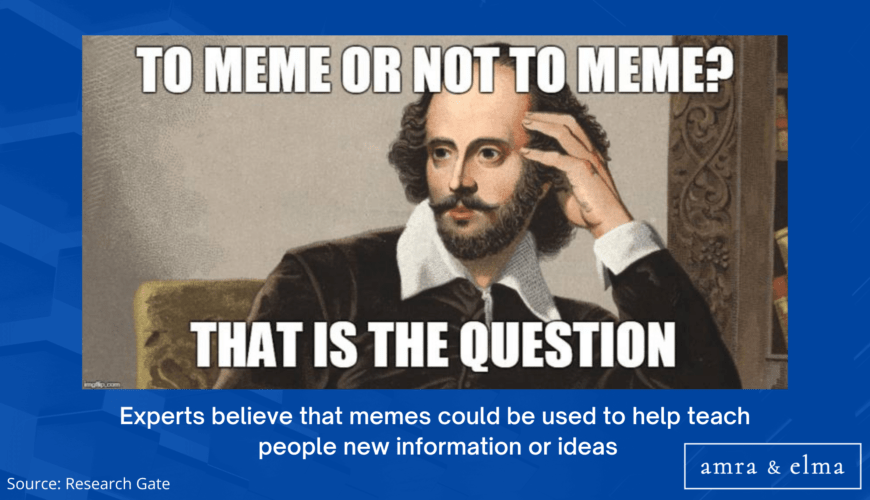
Meme Facts #11: The lifespan of the modern meme is four months.
A recent study of meme lifespans has revealed that the average lifespan of a meme has dropped significantly in recent years. In 2008, the average meme lasted 23.6 months – just under two full years. However, by 2018, that number had dropped to 4.36 months. This trend continues, with modern memes lasting an average of only four months before becoming outdated and unused. While the causes of this trend are not fully understood, it is clear that the rapidly changing landscape of the internet is playing a role. With new memes being created and shared at an ever-increasing rate, it is becoming increasingly difficult for any one meme to stand out from the rest and achieve lasting popularity. As a result, we see a trend towards shorter meme cycles.
In recent years, memes have become an increasingly popular way to communicate online. And while they are often used for simple amusement, they can also be powerful tools for raising awareness about important issues. For example, memes have been significantly used in the fight for social justice. By spreading viral images that highlight the hypocrisy of those in power, memes have helped spark a global conversation about the need for change. In addition, memes have also been used to expose political corruption and call attention to the broken promises of those in office. In an age where information is constantly being shared online, memes provide a unique way to reach a large audience with a powerful message. As we continue to face new challenges globally, memes will likely play an essential role in driving social change.
Meme Facts #13: The most valuable NFT meme is “Disaster Girl,” worth $573,000 at the auction.
Last year, a meme known as “Disaster Girl” became the most valuable non-fungible token (NFT) in history, selling for $573,000 at auction. The meme, which features a young girl smiling mischievously in front of a burning house, became an overnight sensation after being first posted on 4chan in 2007. Since then, it has been widely shared online, appearing on everything from T-shirts to coffee mugs. Now, “Disaster Girl” has been turned into an NFT and sold at auction for a record-breaking price. While some have criticized the high price tag attached to the meme, others believe that it is a sign of the growing popularity of NFTs. Whatever the case may be, “Disaster Girl” is now the most valuable NFT meme.
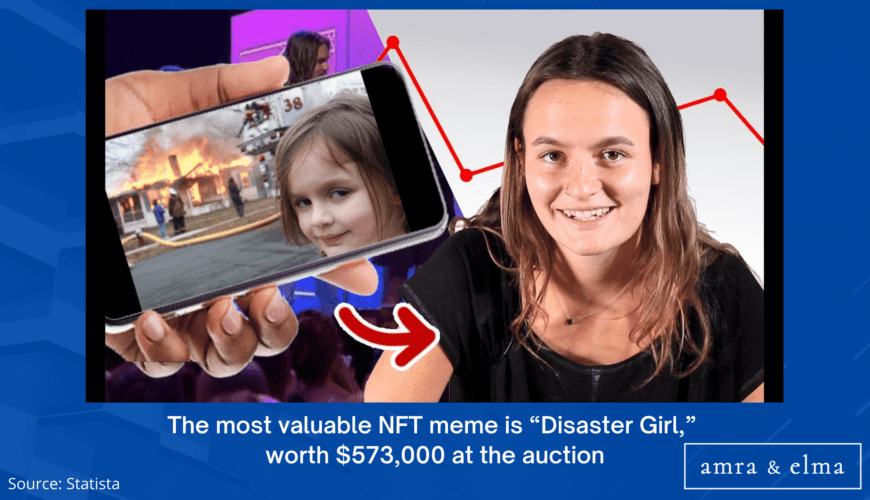
Meme Statistics #14: The second most profitable NFT meme is “Nyan Cat,” worth $516,000 at the auction.
The cryptocurrency market is ever-changing, and new trends are constantly emerging. One of the latest trends is the rise of non-fungible tokens or NFTs. These unique digital assets are becoming increasingly popular, with some memes selling for hundreds of thousands of dollars at auction. The second most profitable NFT meme is “Nyan Cat,” which sold for $516,000 at a recent auction. “Nyan Cat” is a cartoon cat that became popular online in 2011. The meme typically features the character flying through space with a rainbow trail behind it. While the value of NFTs can fluctuate, it’s clear that there is a strong demand for these unique digital assets. As more people become interested in cryptocurrencies, the market for NFTs will likely continue to grow.
Meme Statistics #15: The third most profitable NFT meme is “Overly Attached Girlfriend”, worth $460,000 at the auction.
The non-fungible token (NFT) market has exploded in popularity in recent months, with digital artists and content creators alike finding new ways to monetize their work. While some NFTs have sold for astronomical sums, others have been more modestly priced. However, one trend that has emerged is the popularity of memes as NFTs. The third most profitable meme-based NFT is “Overly Attached Girlfriend,” which sold at auction for $460,000. The image, which features a woman with an intense stare and clingy demeanor, became famous in 2012 after posting on Reddit. Since then, it has been used countless times as an online reaction image and has even been turned into a 3D animation. The high price paid for the “Overly Attached Girlfriend” NFT reflects both the enduring popularity of the meme and the current craze for all things digital. As the world becomes increasingly digitized, it’s likely that we’ll see more and more NFTs based on popular culture icons like “Overly Attached Girlfriend.”
Meme Facts in Summary
This report has outlined some crucial meme facts for 2022. As we can see, memes are an essential part of our online culture. They allow us to communicate and express ourselves in new and creative ways. They can also spread important messages and raise awareness about important issues. However, it is essential to remember that not all memes are created equal. Some memes are simply funny or entertaining, while others can be offensive or insensitive. When sharing memes, it is essential to be thoughtful and considerate of the audience. There are many reasons why memes are crucial, and they should be enjoyed responsibly.
TOP MEME FACTS IN 2023- FAQ:
Who invented the memes?
Richard Dawkins invented the memes and first coined the term in his 1976 book The Selfish Gene. Dawkins observed that specific ideas and behavior patterns seemed to spread through a population similar to genes. He called these units of cultural transmission “memes” and predicted that they would become increasingly important as the world became more connected.
What is the most known meme?
The most known meme is “Disaster Girl”, who later became the most valuable non-fungible token (NFT) in history, selling for $573,000 at auction. The meme, which features a young girl smiling mischievously in front of a burning house, became an overnight sensation after it was first posted on 4chan in 2007. Since then, it has been widely shared online, appearing on everything from T-shirts to coffee mugs. Today, “Disaster Girl” has been turned into an NFT and sold at auction for a record-breaking price.
What came first memes?
First memes came with The Dancing Baby or Baby Cha-Cha, which is one of the oldest viral internet sensations. It gained popularity in 1996 through email chains. The short viral video features a 3D rendered baby dancing to the intro of “Hooked on a Feeling” by the Swedish rock group Blue Swede. It was released as a product sample source file in “Character Studio,” a 3D character animation software product.
How old is the meme?
We cannot tell for sure how old is meme. Some historians believe that even cavemen had their prehistoric memes, as suggested by the repetitive depictions of male genitalia that appear on cave walls dating back to 10,000 BC. Another prime example is “Kilroy Was Here,” the pre-internet WWII meme that took Europe by storm in the 1940s. The words appeared on buildings and walls across the continent, most often accompanied by a crude drawing of a bald cartoon man with a large, phallic nose.

